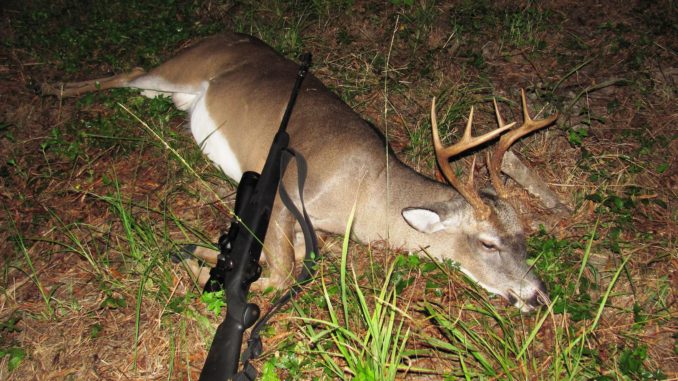
Top deer biologists said South Carolina’s deer herd has stabilized
South Carolina’s deer harvest last fall was up 3.6 percent over 2012, continuing a see-saw trend over the past few years, but the state’s top deer biologist found plenty to be happy about.
Charles Ruth, the deer and turkey project supervisor for the S.C. Department of Natural Resources said the higher harvest figures are encouraging and are representative of a stable population of deer in the state.
“During the 2013 deer season, it’s estimated that a total of 124,482 bucks and 101,324 does were harvested for a statewide total of 225,806 deer,” Ruth said. “This figure represents a 3.6-percent increase in harvest from 2012 … but is 29.5-percent below the record harvest established in 2002.”
Ruth said that the past few years of harvest data does indicate the statewide herd is more balanced after several years of steady decline. He said these small ups and downs are within normal parameters for a balanced deer herd.
“After many years of rapidly increasing during the 1970s and 1980s, the deer population in South Carolina exhibited relative stability between 1995 and 2002,” Ruth said. “After 2002, the population has trended down, until recently becoming more stabilized. The overall reduction in harvest seen since 2002 can likely be attributable to a number of factors, including habitat change. Although timber management activities stimulated significant growth in South Carolina’s deer population in the 1970s and 1980s, considerable acreage is currently in even-aged pine stands that are greater than 10 years old, a situation that does not support deer densities at the same level as younger stands in which food and cover is more available.”
Ruth said coyotes are another piece of the puzzle.
“SCDNR has recently completed a major study with researchers at the Savannah River Site investigating the affects coyotes are having on the survival of deer fawns,” he said. “Cumulative data through the first three years of the study indicated approximately 70- percent total fawn mortality, with coyotes being responsible for approximately 80 percent of these mortalities. If these findings even moderately represent a statewide situation, this new mortality factor is clearly involved in the reduction in deer numbers. This is especially true when combined with extremely liberal deer harvests that have been the norm in South Carolina.”
Overall, OrangeburgCounty led South Carolina in total harvest with 11,753 deer taken during the 2013 season, followed by Newberry with 8,024, Colleton with 8,021, Fairfield with 7,999 and Williamsburg rounding out the top five with 7,518.
A better comparison of counties, according to Ruth, takes into account the size of the county in area. In that case, Bamberg County produced a greater number of deer killed per square mile in 2013: 18.7. Union was second with 17.9, followed by Allendale with 16.9, Spartanburg with 16.5 and Calhoun with 16.4. Statewide, according to Ruth, hunters took 10.7 deer per square mile.
“Although the deer population in the state has declined since 2002, this harvest rate should be considered good in comparison with most states,” he said.
“With a stabilized herd, the prospects for 2014 are encouraging in terms of harvest,” Ruth said. “I think we’ll be close again to what was harvested this year, depending on external factors that can influence harvest. One is hunter effort and can be a result of having good or poor weather for hunting on opening weeks of the various seasons and during the rut. Weather has an impact on the amount of hunter effort, and that correlates to harvest.”




Be the first to comment